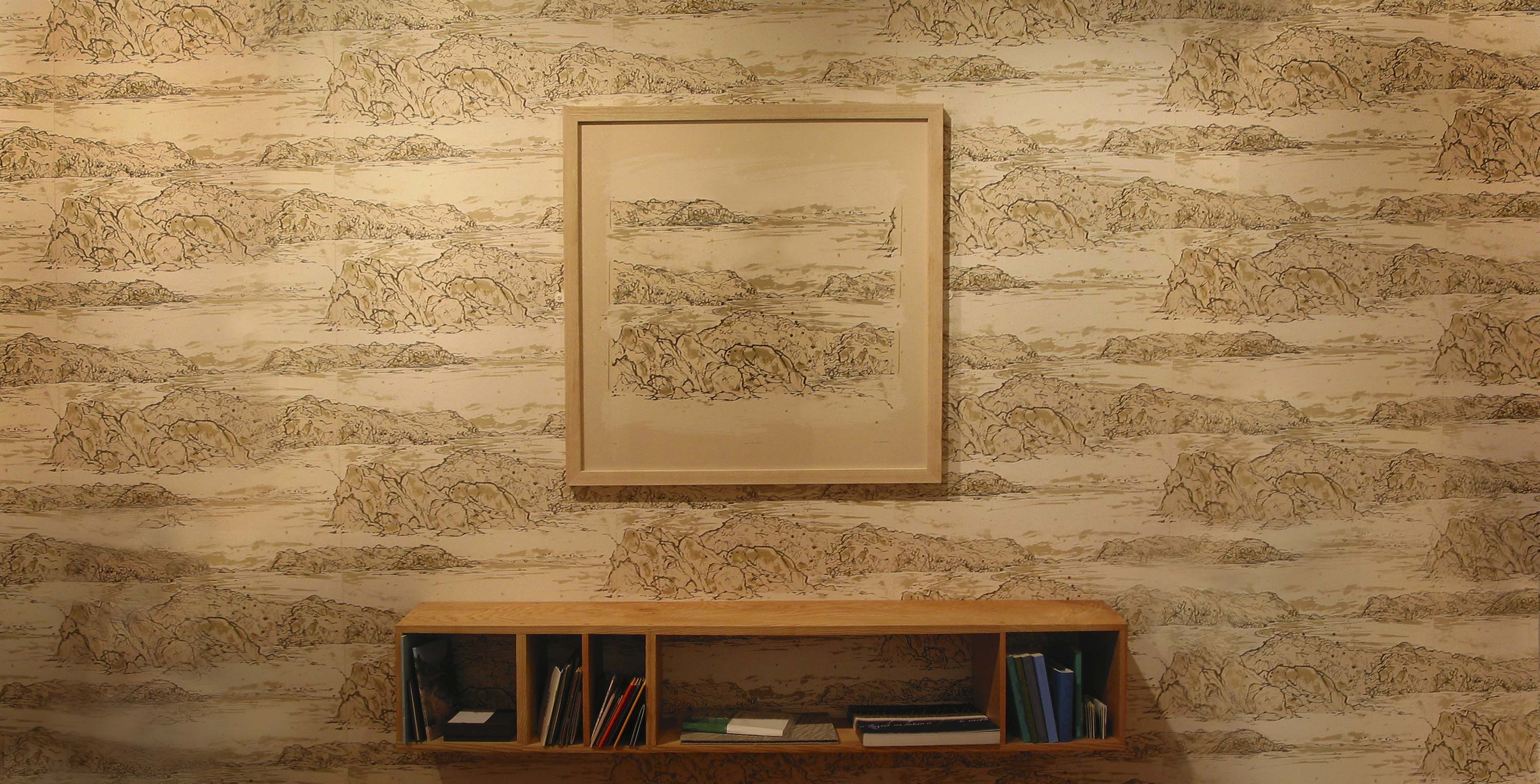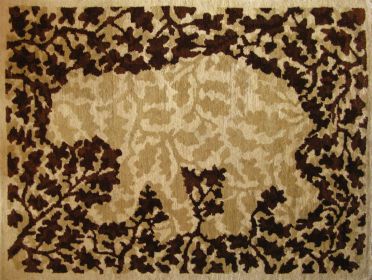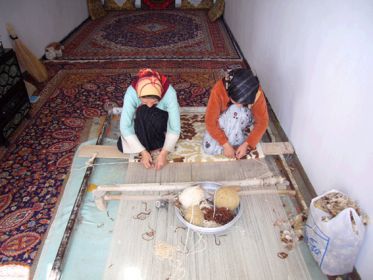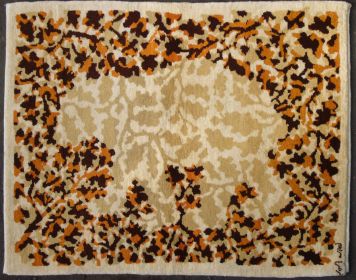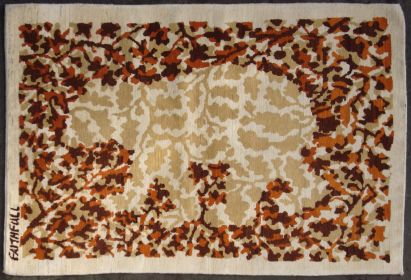THE GREAT BEAR THROUGH THE OAK TREES
Embossed Powdered Oak Gall and acrylic
‘The Great Bear' is one of a series of experimental prints, incorporating solid, powdered and shredded materials, and continues experimental printmaking processes, originally incorporating shredded Bank of Scotland bank-notes in the biblically themed prints 'Pieces of Silver'. The subject matter investigates the ecology, history and mythology of the 'Forest', particularly in relation to North European traditions.
These particular investigations involve the traditional use of oak galls, their properties as a natural dye and as the basis of medieval manuscript ink, as used in The Book of Kells. The powdered galls in this instance have been transformed into a 'flock' wallpaper effect, adding raised textures and contrasting de-bossed impressions to normally flat screen prints.
‘The Great Bear’ image was also transformed into an edition of hand-woven rugs, produced using traditional processes in Northern Iran. In this instance the natural dyes used were cammomille, walnut and madder.
Projects utilising oak gall ink, also include the Artists Book collaboration with the writer John Burnsideon the Isle of Jura. He was sent a phial of the ink with a Hebridean reed pen to compliment the writing and creative ‘process’ of collaborating with the artist.
INKUBATOR MULTIPLE: The Great Bear
At the foot of the Zagros MountainsAvergan, at the foot of the Zagros mountains, and was recently wipedout in an earthquake and re-built on top of a nearby hill. This village comprises some 200 or so homes a dirt main street and one shop. The surrounding area is filled with orchards and walnut groves. The area is called the Char Mahal Valley and the nearest main town is called Borujen. The main tribal group in the village is Bakhtiari although Qashqai nomads do arrive after the spring migration. The weavers are called Zarah and Azam. They are Bakhtiari's and are the best weavers of the area!!!.....
The Nomads Tent has been actively commisioning rugs from these weavers for the last 10 years and helping to re establish the use of natural dyes in the area. The Great Bear rug would be about 4 months work for one weaver, weaving in her spare time, as there is lots of other work and chores to be done.
The lion headstones are put up when the headman of the village dies, or sombody wealthy or important. pre islamic iconography which has also come to represent Iran as in a lion with sun rising over its back.
The wool used in 'the Great Bear' rug is from fat tailed sheep, described in the bazzar as kordi. Which just means of kurdish origin.The dyes used are, undyed white wool, Jashir(camomile), madder and dyer's weld, for the orange. walnut skins and madder on white wool for the light brown and walnut skins on naturally dark wool for the darker brown.
 |
 |

